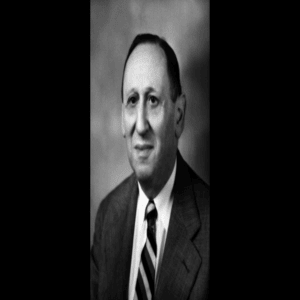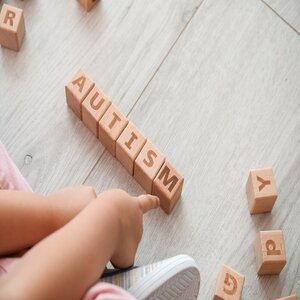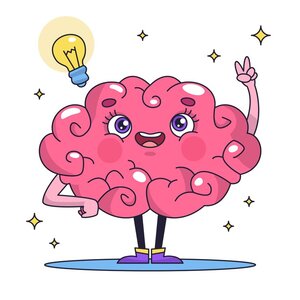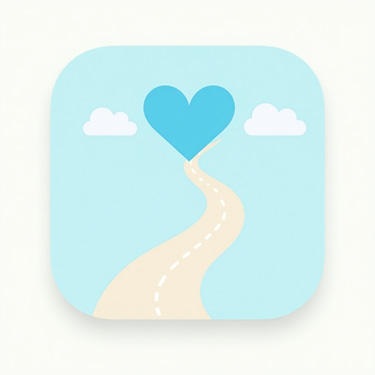

📜 How Was Autism Discovered? A Bit of History
The path toward understanding autism has been long, complex, and constantly evolving—marked by key milestones that changed both medical and social perspectives. For decades, what we now know and refer to as Autism Spectrum Disorder (ASD) was a barely defined concept, clouded by prejudice, misdiagnoses, and misconceptions that made it difficult for those affected to be properly supported or accepted. As science progressed, so too did society's outlook, shifting from a stance that was often exclusionary and stigmatizing to one that is more human, respectful, and inclusive. Understanding this history is essential not only from a clinical or medical standpoint, but also from a social and human perspective. It helps us break down barriers, promote empathy, and build a world where neurological diversity is recognized and valued as a vital part of our collective coexistence..
🔍 🧠 Early Clinical Observations
It was in 1943 when psychiatrist Leo Kanner, an Austrian-born professional who had settled in the United States, made a groundbreaking contribution by describing for the first time what he termed “early infantile autism.” This discovery was based on his detailed observation of eleven children who shared a set of defining characteristics. These included significant difficulties with social interaction, very limited or unusual use of verbal and non-verbal language, an almost obsessive attachment to rigid routines, and the constant repetition of certain behaviors. For Kanner, these traits suggested a deep, innate difficulty in forming human relationships and communicating with the surrounding world—something that, until then, had not been clearly identified as a distinct developmental phenomenon. His work laid the foundation for what would become a new field in child psychiatry, one that aimed to understand the unique needs and behaviors of these children from a clinical perspective, moving beyond generic labels or diagnoses.
Just one year later, in 1944, another Viennese physician named Hans Asperger made a parallel and complementary contribution that would further expand our understanding. Asperger identified a group of children who exhibited characteristics similar to those described by Kanner, but with notable and important differences that added complexity to the emerging concept of autism. These children demonstrated more fluent and articulate language, cognitive abilities that matched or even exceeded expectations for their age, and a deep, specialized fascination with highly specific topics such as science, history, or the arts. Although Asperger’s work initially went largely unnoticed in the English-speaking world, it later gained recognition and led to the term “Asperger’s Syndrome.” Today, this syndrome is understood as a part of the broader autism spectrum and reinforces the idea that autism encompasses a wide range of profiles and experiences. The observations of both Kanner and Asperger were fundamental in laying the groundwork for modern ASD diagnosis and opened the door to recognizing the immense diversity of strengths, challenges, and ways of being that exist within the spectrum.
Welcome to MiRutaTEA, a platform designed to support individuals with Autism Spectrum Disorder (ASD), their families, and professionals. Here, you will find information, free resources, educational tools, and spaces for connection to help build a more inclusive, empathetic, and aware society.
🌍 The Path Toward Greater Understanding
The journey toward a deeper understanding of autism has been marked by significant scientific advances and a growing social awareness. Over the past few decades, numerous studies in fields such as neuroscience, genetics, and psychology have helped dismantle old myths and misconceptions, replacing them with evidence-based knowledge. One of the most important realizations has been that autism is not caused by poor parenting or emotional coldness—as was wrongly believed in the mid-20th century—but rather by a complex interplay of neurological and genetic factors.
We now know that the autistic brain processes information differently, which can result in both challenges and exceptional strengths. Autism is not a disease to be cured, but a different way of perceiving, thinking, and interacting with the world. This change in perspective has allowed the creation of more inclusive educational systems, work environments, and support networks that recognize and adapt to the individual needs of people on the spectrum.
In parallel, the voices of autistic individuals themselves and their families have become increasingly central in shaping public discourse. Their testimonies, experiences, and advocacy efforts are driving a cultural shift that values neurodiversity and promotes dignity, respect, and opportunities for all. Society is beginning to embrace a broader and more compassionate vision, where differences are not only accepted but celebrated as part of human richness.


🧠 What Causes Autism?
Autism has no single, simple cause. Current scientific research agrees that ASD results from a complex interaction between multiple biological and environmental factors that influence neurological development. Among the most studied factors are:
Genetic: Over the years, numerous genes have been identified that are related to the development of autism, although no single gene is responsible. The combination of inherited or spontaneous genetic variations can increase the likelihood of a person presenting with ASD, partly explaining the high diversity of profiles and clinical manifestations within the spectrum.
Neurological: The brains of people with autism process information differently, which can affect fundamental aspects such as communication, sensory perception, emotional regulation, and social behavior. These neurological differences explain many of the core characteristics of ASD, from difficulties interpreting social cues to increased or decreased sensitivity to environmental stimuli.
Environmental: Although not direct causes, certain prenatal and perinatal factors, such as infections during pregnancy, exposure to certain substances, or complications during childbirth, may increase the risk of autism developing. However, these factors do not solely determine the onset of the disorder and usually interact with genetic and neurological predisposition.
It is fundamental to highlight that autism is not a disease nor something that needs to be "cured." Rather, it is a neurodevelopmental condition that implies a particular and valid way of experiencing the world. Therefore, the correct approach is respectful accompaniment, adequate support, and the creation of environments that allow each person with ASD to develop their maximum potential and live with dignity, autonomy, and happiness.


💙 Why Is It Important to Know This History?
Understanding in depth the history of autism and the evolution of its comprehension is vital for several reasons that directly impact the quality of life of affected individuals and their families, as well as social and cultural progress:
First, it allows us to appreciate and acknowledge the enormous scientific and social advancements that have made it possible to significantly improve the lives of millions of people with ASD worldwide. These advancements have facilitated better diagnoses, early interventions, and support programs that have transformed realities and opened doors to inclusion.
Furthermore, it helps us break down myths, prejudices, and stigmas that still persist and often represent barriers more difficult to overcome than the diagnosis itself. Lack of knowledge generates fear and rejection, while information and awareness foster acceptance and respect.
Knowing this history is also key to recognizing neurological diversity as invaluable richness and not as a deficiency or disease. Every autistic person brings a unique way of seeing, understanding, and feeling the world, and this diversity enriches all of society.
Finally, it invites us to accompany with empathy, patience, and respect, knowing that each person with ASD has a particular and valuable way of feeling, learning, communicating, and living. Committing to a more inclusive society means opening our hearts and minds, providing real opportunities, and building spaces where all ways of being are valued, respected, and celebrated as an essential part of humanity.
🔗 Access Each Section:
🎓 Education


📌 Classroom and Home Methodology
📌 Basic Guide to Autism
📌 Cognitive Stimulation and Learning




❤️ Health
📌 Nutrition
📌 Sports
📌Sugar, Anxiety, and Autism
📌 Games to Foster Language
📌 Language and Communication in Autism
📌 Alternative Communication Methods
🗣️ Communication
🧩 Free Resource for Families and Professionals
We're gifting you a PDF activity kit, ideal for children with Autism Spectrum Disorder (ASD). It includes cutout cards, games to stimulate attention, coloring activities, playful dynamics, and much more.
📚 This material has been compiled from various autism communities with the goal of sharing, supporting, and enriching learning through love and inclusion.
💖 Download it for free and start enjoying it today!
📥
Are you a Professional or Do You Provide Services Related to ASD?
At MiRutaTEA, we're developing a new section where therapeutic companions, psychologists, speech therapists, psychopedagogues, specialized teachers, and other professionals can showcase their services through our app and website.
🧩 What Will You Be Able to Offer?
Therapeutic services, school support, or stimulation.
Workshops, group activities, or intervention proposals.
Links to your social media or professional website.
Contact information so families can easily find you.
💙 How to Join?
We'll soon launch a low-cost monthly subscription system so you can be part of our community. In the meantime, you can complete the contact form and tell us about your work.
🚀 Join a Network Designed to Connect Families with Professionals Committed to the Inclusion and Well-being of Individuals with ASD.
🔗 One Click Makes a Difference
Follow us on social media and help us reach more families with information about autism and alternative communication.
📲 Your support means a lot! 👇
💙 At MiRutaTea, we believe in the power of every voice.
Your experience can support, inspire, and help someone feel less alone.
🧩 Click the button and join the blog: read, share, and be part of the conversation.
This space is yours too.
